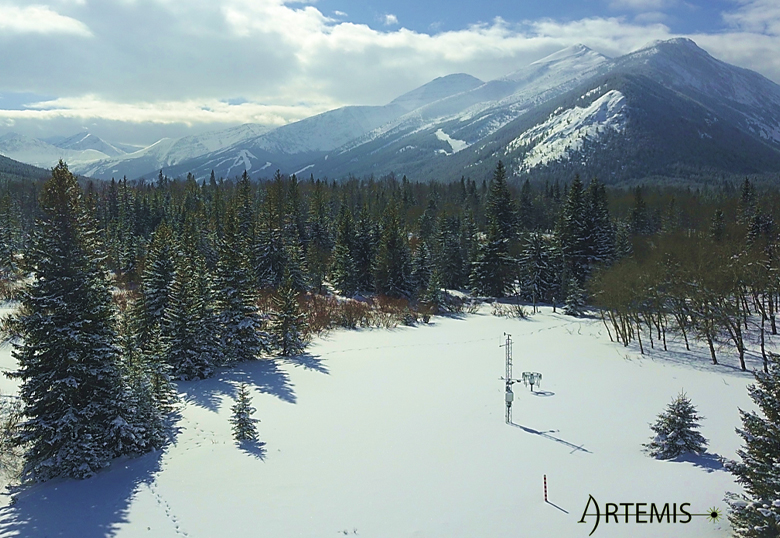Alberta’s Eastern Slopes are changing, and with land use practices under increasing pressure, it’s imperative policy makers fully understand the relationship between snowpack and downstream river runoff in managing our water resources.
A new project, headed by principal investigator Dr. Chris Hopkinson of the University of Lethbridge and funded by Alberta Innovates, will partner academics with the public and private sector to develop innovative data and technology workflows to better understand and monitor the conditions of Alberta's Eastern Slopes vegetation and snowpack resources.

“Mountains are incredibly valuable to us, not just for their easy access to natural resources or as indicators of environmental change, but also for their recreational and spiritual values,” says Hopkinson, a researcher in the Department of Geography & Environment and the Advanced Resolution Terradynamics Monitoring System Laboratory (ARTEMIS). “More than anything, they are the source of our most critical resource — water.”
The majority of Alberta’s cities draw water from rivers that begin as glacial or snow melt in the Eastern Slopes, hence the need for source water protection of these key areas, often referred to as natural water towers.
“With changes in climate and the many land cover changes that have occurred due to resource extraction, wildfire, insect outbreaks and other successional processes, there is a growing concern that the water resources we have come to rely on over the last century may not be available in the future,” says Hopkinson.
Made possible by an Alberta Innovates investment of $583,000 over four years, the project will marry satellite imaging and airborne lidar data with on-ground monitoring devices to gain a better understanding of historical and future trends in Eastern Slopes landcover, snowpack and water balance. It also highlights a concerted effort by multiple partners, including Alberta Environment and Parks, Parks Canada (Waterton, Banff and Jasper), University of Waterloo, MacHydro Consultants Inc, Fluid Planet, Inside Education and Castle Mountain Resort, to address an issue of public importance.
“We will model changing snowpack and runoff properties across the Eastern Slopes,” says Hopkinson. “Our goal is to develop an integrated snow and vegetation modelling framework to inform future water management and policy in Alberta. This will allow us to understand, forecast and protect our precious water resources.”
Further, the project will support the creation of innovative high tech online resources to support public high school education on Alberta’s Eastern Slopes land and water resources, all while supplying valuable research and training opportunities for ULethbridge graduate students.
“It is exciting to work with talented colleagues across multiple sectors and institutions to construct immersive 3D digital twins of our headwaters,” says Hopkinson. “These new online environments will allow us to share forest, wetland and water resource simulations as educational resources for students and the general public, alike.”
Funding for the project began in January and will run through December 2025.
